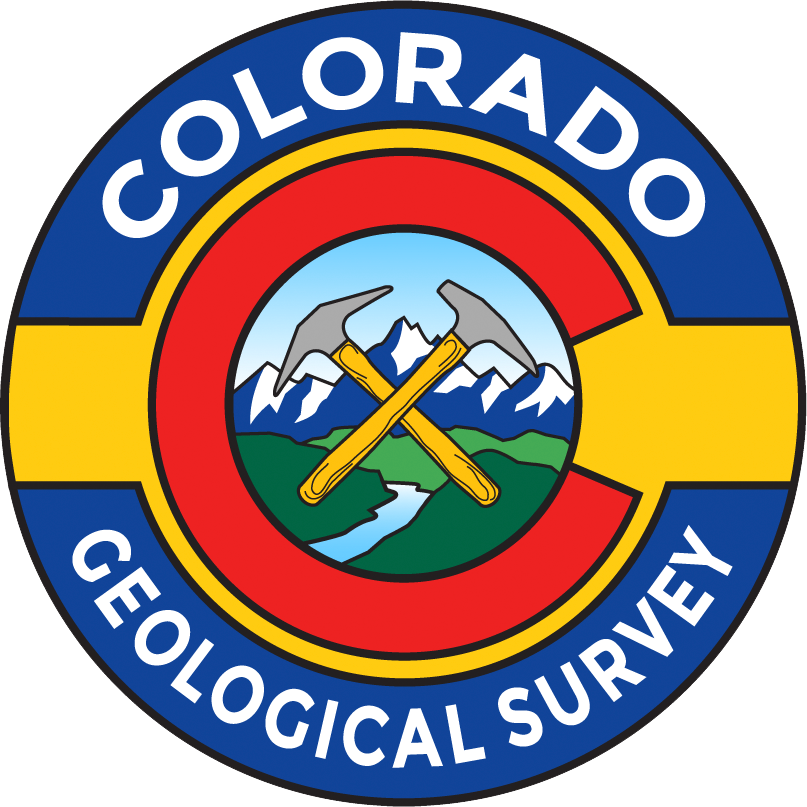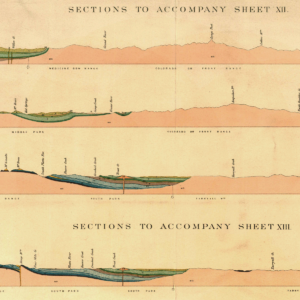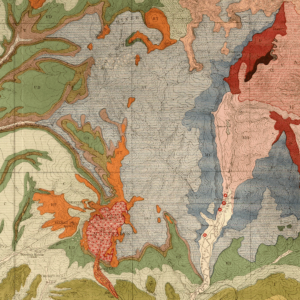Description
Between 1999 and 2008 the CGS mapped and published open-file reports covering twenty preliminary 7.5 minute quadrangles in the area between Colorado Springs and Denver. Most of these quadrangles contain exposures of Upper Cretaceous through Eocene strata deposited as synorogenic sedimentary units that filled the Laramide Denver Basin. In this report, Dr. Jon Thorson, who participated in many of those prior mapping efforts, unifies and simplifies the stratigraphy and nomenclature of units on those preliminary maps and reports. Digital PDF download. OF-11-02D
In the Colorado Springs area the Denver Basin Group stratigraphic section is composed of five units, in ascending order:
1. a basal late Cretaceous unit (Kpv) composed almost exclusively of andesitic debris and introduced from the southwest. This unit, previously only designated the “lower part of the Dawson Formation”, has herein been named the Pikeview Formation of the Denver Basin Group;
2. the Pulpit Rock facies unit (TKpr) composed almost exclusively of granitic debris shed eastward from the rising mountain front, herein designated as the Pulpit Rock Formation of the Denver Basin Group;
3. the Jimmy Camp facies unit (TKjc) of mixed volcanic and granitic composition introduced into the Denver Basin from the south, herein designated as the Jimmy Camp Formation of the Denver Basin Group;
4. the Black Squirrel Formation (Tbs), a finer-grained mixed composition unit that can be mapped south of the Palmer Divide, and that is probably partially equivalent to part of the Denver Formation north of the Divide and in the Denver area, and
5. the Dawson Arkose (Tda) which can be mapped continuously from the north side of Palmer Divide to the southern edge of the Denver metropolitan area. In the Castle Rock area, the Denver Formation and the Dawson Arkose make up the entire exposed Denver Basin Group section. The Laramide synorogenic sedimentary units are overlain by the remnants of three younger Eocene units; the Larkspur Conglomerate, Wall Mountain Tuff, and Castle Rock Conglomerate. The Larkspur Conglomerate is a newly named coarse arkosic conglomerate identified by Richardson in 1915. It was first mapped and described during this contemporary mapping program.




